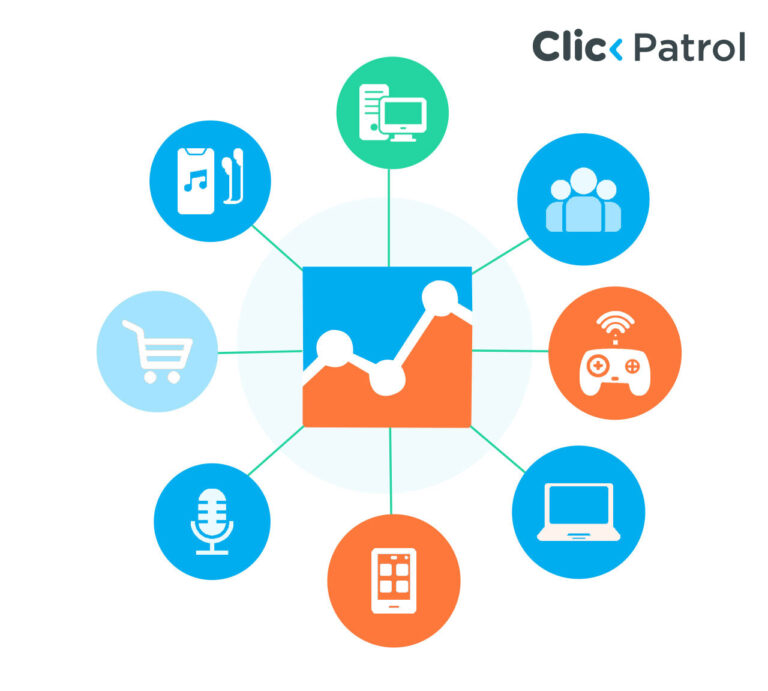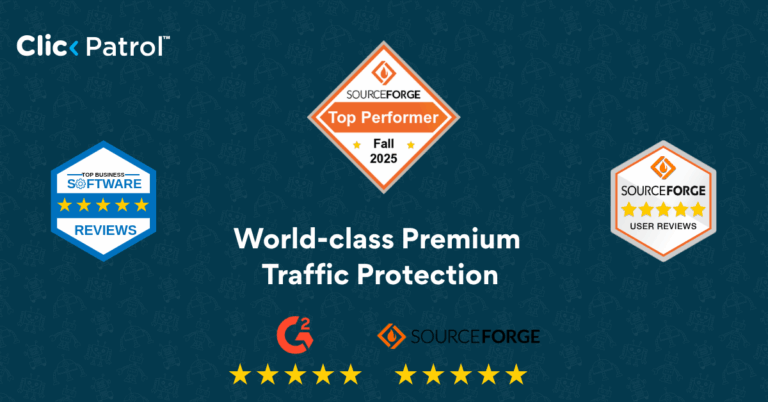
How to Block Bot Traffic in Google Analytics
Abisola Tanzako | Jun 20, 2024

Table of Contents
- What is bot traffic?
- How does bot traffic work?
- Common sources of bot traffic
- How can bot traffic affect your Google Analytics?
- 1. Inflated traffic metrics:
- 2. Compromised geographic data:
- 3. Distorted engagement indicators:
- 4. Unreliable conversion tracking:
- 5. Altered content performance metrics:
- 6. Wasted marketing efforts:
- How to identify bot traffic in Google Analytics
- How to block bot traffic in Google Analytics
- FAQs
Data is essential for business and online platform success in today’s digital world, making data-centric strategies essential. Organizations, from businesses to individuals, rely on accurate data to make decisions that drive success. Google Analytics provides an in-depth analysis of websites’ effectiveness and visitors’ behavior, giving insight into traffic patterns.
However, bot traffic infiltration compromises the integrity of this data by warping the analytics and leading to incorrect conclusions and poorly thought-out strategic decisions. This article will explore the complexities of bot traffic, examine its effects on Google Analytics, and provide a thorough guide on identifying and blocking bot traffic to protect the reliability and validity of analytical data.
What is bot traffic?
Bot-generated traffic is essentially a stream of automated interactions with websites created by software scripts known as bots. These bots have various purposes and effects on web environments. Some bots are constructive, such as those deployed by search engines to index web content. However, fraudulent bots are designed to engage in harmful activities like scraping website content, flooding sites with spam comments, or executing credential-stuffing attacks.
Such bot traffic can significantly skew the data in Google Analytics, leading to inflated visitor counts, skewed engagement metrics, and distorted conversion rates. It’s essential to identify and neutralize bot traffic to preserve the accuracy of Google Analytics data and ensure that the insights derived are based on actual human interactions.
How does bot traffic work?
Bot traffic works through automated scripts or programs, known as bots, which simulate human activity on the internet. These bots send requests to web servers, mimicking how a human interacts with a website or application. The nature of bot traffic varies; it includes both beneficial bots, such as those used by search engines for indexing, which adhere to rules set out in robots.txt files and typically don’t affect analytics, and malicious bots, which ignore these rules and can cause harm.
Malicious bots are responsible for content scraping, fraudulent transactions, and DDoS attacks, which can distort analytics data, leading to incorrect interpretations of website traffic and user engagement and potentially resulting in flawed business decisions.
Common sources of bot traffic
Bot traffic encompasses a variety of automated software applications, each designed for specific tasks across the internet. Here are some of the common sources of bot traffic:
- Web crawlers: Essential for search engines like Google, Bing, and Yahoo, web crawlers systematically browse the web to discover and index new pages. They navigate through links and meticulously scan website content to refresh the search engine’s database with the latest information.
- Monitoring/tracking bots: These bots serve as digital sentinels for services that need to ensure their websites are always operational, performing optimally, and secure. They conduct regular checks, scan for any disruptions or security breaches, and promptly report back with their findings.
- Scraping bots: Often employed for data aggregation, scraping bots are programmed to harvest specific data from websites. They can target a wide range of information, from content and pricing to product details, often for competitive analysis or market research.
- Spam bots: The bane of digital platforms, spam bots flood websites, forums, and social media with unsolicited content. Their posts often include irrelevant comments, promotional links, or misleading information, cluttering and compromising the user experience.
- Hacking bots: Cybercriminals utilize these bots to probe websites for weaknesses, execute brute-force attacks, or spread malware. They are a persistent threat, constantly evolving to exploit new vulnerabilities in web security.
- Impersonator bots: Crafted to mimic human interactions, they can deceive security protocols like CAPTCHA, allowing them to perform unauthorized website activities, from fake account creation to fraudulent transactions.
- Research/academic bots: Deployed by scholars and researchers, these bots are tools for data collection, website structure analysis, or algorithm testing. They play a crucial role in academic studies and technological advancements.
- DDoS bots: These bots carry out Distributed Denial of Service (DDoS) attacks, overwhelming a website with traffic and making it slow or unresponsive.
- SEO crawlers: SEO tools like Semrush or Ahrefs use bots to crawl the web and gather data for keyword research or competitor analysis.
- Click bots: Click bots are programmed to click on digital ads, inflating the number of clicks and causing advertisers financial loss.
How can bot traffic affect your Google Analytics?
Bot traffic can profoundly impact Google Analytics, leading to data that does not accurately reflect human user behavior. Let’s look into more details on the impact of bot traffic on your Google Analytics:
1. Inflated traffic metrics:
Bots can significantly increase the number of page views and sessions recorded in Google Analytics. This artificial inflation can give the false impression of higher website traffic and engagement than exists.
2. Compromised geographic data:
Since bots can originate from any location, they can skew the geographic distribution data in Google Analytics. This makes it difficult to pinpoint the real locations of your human audience accurately, which is crucial for targeted marketing strategies.
3. Distorted engagement indicators:
Bots typically exhibit different interaction patterns than human users, which can lead to skewed bounce rates and session durations. These metrics are important indicators of user engagement and content relevance, and when distorted, they can misrepresent your audience’s actual interest and behavior.
4. Unreliable conversion tracking:
If bots are triggering conversion events, such as form submissions or product purchases, this can lead to inaccurate conversion data.
5. Altered content performance metrics:
Bot traffic can also affect specific pages or content performance metrics. This distortion can make it challenging to identify which content is genuinely engaging and valuable to your human audience.
6. Wasted marketing efforts:
When decisions are made based on data affected by bot traffic, marketing efforts, and budgets may be well spent on strategies that do not effectively reach the intended human audience.
To ensure the accuracy and reliability of your Google Analytics data, it’s essential to implement measures to filter out bot traffic. This can include using Google Analytics’ built-in bot filtering options, employing advanced bot detection and mitigation tools, or customizing your tracking code to exclude known bots and spiders.
How to identify bot traffic in Google Analytics
Identifying bot traffic in Google Analytics is crucial for ensuring data accuracy. Here’s a comprehensive guide on how to spot and filter out bot traffic:
- Analyze traffic sources: Check for unassigned or direct traffic sources, often indicating bot visits.
- Monitor conversion peaks: A sudden peak in conversions without a corresponding increase in genuine user activity might suggest bot interference.
- Inspect geographic data: Look for suspicious traffic from cities or regions that do not align with your expected audience demographics.
- Evaluate engagement rates: Bots typically have low engagement rates and zero engagement time, which can clearly indicate non-human traffic.
- Check bounce rates: A high volume of bounces, especially with a low session duration, can be a sign of bot activity.
- Assess session duration: Low engagement sessions, with minimal session duration, can also point to bots.
- Review referral traffic: Unfamiliar referral traffic sources can be a red flag for bot traffic.
By following these steps, you can more effectively identify bot traffic and ensure that your Google Analytics data reflects the behavior of real users, providing you with accurate insights for decision-making.
How to block bot traffic in Google Analytics
To safeguard the accuracy of your Google Analytics data, it’s essential to implement measures to block bot traffic. Here’s an expanded list of strategies to help you achieve this:
- Hostname filtering: Implement filters to block traffic from hostnames or IP addresses identified as sources of bot traffic. This prevents bots from skewing your analytics data.
- User agent filtering: Exclude traffic from user agents known to be associated with bots and crawlers. This helps filter out non-human traffic.
- Campaign source filtering: Set up filters to exclude traffic from sources commonly used by bots, such as “gmail.com” or “yahoo.com,” which can indicate spam or bot activity.
- ISP filtering: Block traffic from Internet Service Providers notorious for hosting bots or proxy servers.
- Referral exclusion: Use referral exclusions to eliminate traffic from sources known to be used by bots, ensuring that your referral data remains clean.
- Limit by browser language: Since bots often use a default language setting, you can set up filters to exclude traffic based on language settings that match those commonly used by bots.
- Limit by screen resolution: Filter out traffic from users with screen resolutions typical of bots, as many bots use default screen resolution settings.
- Engagement-based filtering: Exclude sessions with no signs of engagement or abnormally short durations, often indicative of bot traffic.
- Google Analytics bot filtering: Use Google Analytics’ built-in bot filtering feature to automatically exclude known bots and spiders from your reporting.
- Regular data reviews: Conduct regular reviews of your analytics data for any anomalies that could indicate bot traffic.
- Implement Captcha: Integrate Captcha or other human verification methods at entry points to your site to prevent bots from accessing your content and being counted in your analytics.
- Use bot protection software: Bot protection software is the most effective way to get rid of bot traffic. They are quite accurate and save you several hours of manually trying to get rid of them. ClickPatrol is a bot protection tool that provides comprehensive protection from bot traffic. With Its superior algorithm, it predicts, detects and blocks bots more efficiently than other tools on the market.
Employing these comprehensive strategies can effectively minimize the impact of bot traffic on your Google Analytics data. Regularly updating and reviewing your filtering criteria is crucial as bots continuously evolve.
Manage bot traffic effectively
The presence of bot traffic is an inescapable reality in the digital world. This bot traffic, if not managed properly, has the potential to skew the accuracy of your Google Analytics data significantly. However, it’s important to note that this doesn’t necessarily mean your analytics data is compromised. By understanding bot traffic, its nature, and its operational mechanisms, you can effectively safeguard the integrity of your data.
Identifying bot traffic and implementing robust blocking strategies are key to this process. This ensures the accuracy of your insights and facilitates better decision-making for your website or application.
FAQs
Q:1 What distinguishes good bots from bad bots?
Good bots and bad bots serve fundamentally different purposes. Good bots are employed for legitimate tasks, such as crawling search engines to index web pages, thereby aiding in the smooth functioning of the internet. On the other hand, bad bots are utilized for harmful activities, such as spamming, which can disrupt online services and negatively impact user experiences.
Q:2 What is the recommended frequency for monitoring Google Analytics for bot traffic?
It is advisable to monitor your Google Analytics for bot traffic regularly, ideally weekly or monthly. Regular monitoring helps maintain your data’s accuracy and enhances your digital assets’ security.
Q:3 Are all bot traffic harmful?
No, not all bot traffic is harmful. For instance, search engine crawlers, a type of bot, play a crucial role in enhancing your website’s visibility in search results. However, it’s important to note that malicious bots and an overabundance of bot traffic can distort your analytics data, potentially leading to inaccurate insights.
Q:4 Will blocking bot traffic affect my legitimate website traffic?
When done correctly, blocking bot traffic will not interfere with your website traffic. It’s all about using the proper techniques to distinguish and block bot traffic, ensuring your legitimate traffic remains unaffected.





